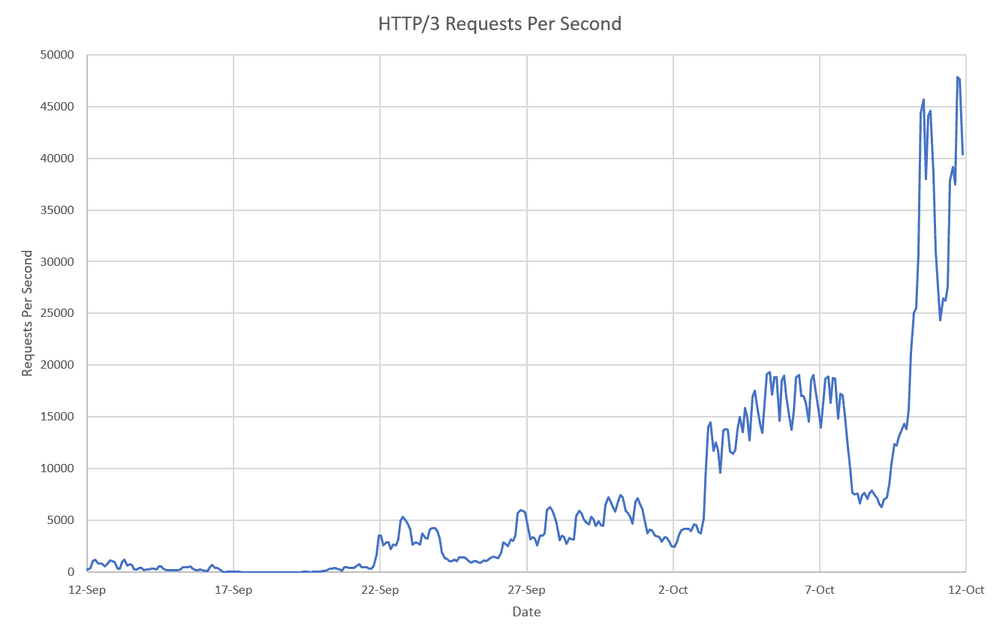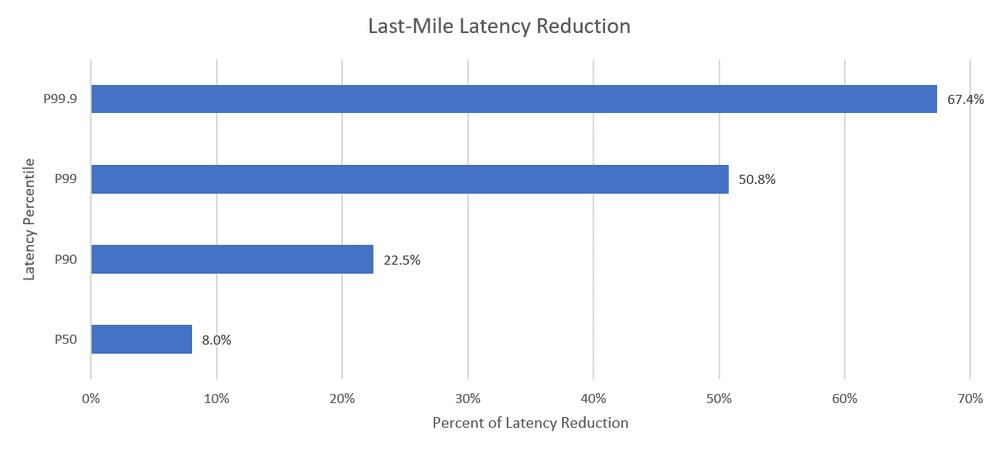Microsoft Brings HTTP/3 via Windows Server 2022 to Exchange Online
One of the most important infrastructure features Microsoft released with the recent Windows Server 2022 is HTTP/3. Since hitting the ‘General Availability’ milestone this past September, the Windows Server team has partnered with the Microsoft 365 team in starting a phased upgrade of the front-end Exchange Online servers with Windows Server 2022. Microsoft started with https://outlook.office.com/.
Exchange Online performance boost with Windows Server 2022 and HTTP/3
As of early to mid-October, they have already deployed 20% of the capacity with Windows Server 2022. The data they have received thus far has been very promising and, most importantly, beneficial to their customers…YOU!
Total requests per second (RPS) have increased steadily right along the lines as more Windows Server 2022 servers have been deployed to Exchange Online service front doors. (These are the servers that receive and process most of the client connections requesting access to Exchange Online mailboxes – Outlook desktop app, Outlook on the Web, Outlook Mobile, etc) Now that they’ve achieved 20% deployment, they are seeing RPS spike to nearly 50K per second! Processing 50 thousand client requests…per SECOND!
Last-Mile latency reduction also helps improve Exchange Online speed
That’s remarkable. Microsoft’s Windows Server teams have also been tracking last-mile request latencies. These are the times measured between your Outlook desktop app and these front-end servers. Exchange Online front doors support small request, small response workloads for various ‘Single Page Applications’, like Outlook on the Web where responsiveness is a key differentiator for the end-user experience.
The latency data that has come back has shown their original theories accurate. As can be seen in the last-mile HTTP request latency data above, there are huge gains being seen for Microsoft 365. An 8% reduction from the baseline at the 50th percentile is respectable, but they are seeing over 60% reduction at P99.9! Amazing results. And, again, most important, a more enhanced and responsive end-user experience, especially with Outlook on the Web.
How does HTTP/3 work?
So, why do you think HTTP/3 does such a fantastic job of lowering latency? Well, with every good bit of engineering, there are many reasons. A lot of those come from replacing TCP/TLS layers with QUIC. (Wait…QUIC?). Here is what Microsoft says about QUIC:
- QUIC reduces the number of round trips in the handshake by combining the transport (QUIC) and the security (TLS) handshakes together. Reducing a round-trip means the HTTP request can be started (and completed) that much faster.
- QUIC reduces/removes cross-request (stream) head of line blocking.
- QUIC builds/improves on TCP loss recovery.
- QUIC uses pacing when sending packets.
QUIC makes parallel work independent, improves the speed and accuracy of loss detection, and generally tries to play nice with others on the network. The performance results, already, are impressive. Huge gains in the experience when accessing your mailbox via almost any method!
By the way, customers that have made progress on the Microsoft 365 Principles of Network Connectivity will experience the most benefit from these improvements, with more to come. All you IT Pros and Microsoft 365 Global Administrators can find guidance on how to improve your connectivity in the Microsoft 365 admin center.
Trying Out HTTP/3 on Your Server
If you’d like to try out HTTP/3 in your environment and you’re using older versions of Windows Server (like all of us!), take a look at this Tech Community post. There is also a public preview available for all you .NET users – visit this page for more info to learn more about HTTP/3 with the ASP.NET Kestrel web server.






